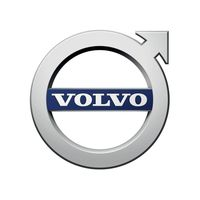The Overcapacity Dilemma: Navigating the Future of the Global Auto Industry
June 9, 2025, 9:58 am
The global automotive industry is at a crossroads. The chairman of Geely, a major player in the market, has raised a red flag. He warns of "serious overcapacity." This statement echoes through the halls of the industry, reverberating like a warning bell. The auto sector, once a symbol of growth and innovation, now faces a daunting challenge.
The automotive landscape is shifting. The rise of electric vehicles (EVs) and changing consumer preferences are reshaping the market. Yet, the core issue remains: too many cars, not enough buyers. This overcapacity is a storm cloud looming over manufacturers.
Geely's decision to halt new manufacturing plants is a strategic retreat. It’s a recognition of the harsh reality that many automakers are grappling with. The Chinese auto industry, the largest in the world, is embroiled in a fierce price war. This battle is not just about sales; it’s about survival. Companies are slashing prices to attract buyers, but this strategy is a double-edged sword. It can lead to short-term gains but may erode long-term profitability.
The price war is a symptom of a deeper issue. As production ramps up, demand has not kept pace. The pandemic disrupted supply chains, but it also altered consumer behavior. People are more cautious. They are holding onto their cars longer. The result? A glut of vehicles on the market.
Geely's chairman, Li Shufu, is not alone in his concerns. Other industry leaders are echoing similar sentiments. The call for a halt to new manufacturing is growing louder. The industry must recalibrate. It needs to find a balance between supply and demand.
In this environment, innovation becomes crucial. Companies must pivot towards electric and hybrid vehicles. The future is electric, and those who fail to adapt may find themselves left behind. Geely is already taking steps in this direction. The company is exploring partnerships, such as its collaboration with Renault in Brazil. This move is strategic, allowing Geely to leverage existing facilities rather than building new ones.
However, even partnerships come with challenges. Regulatory hurdles can slow progress. In Geely's case, Chinese regulators have delayed approval for its Brazilian venture. This delay is a reminder that the road to expansion is fraught with obstacles.
The global auto industry is not just facing overcapacity; it is also grappling with sustainability. Consumers are increasingly aware of their environmental impact. They want greener options. Automakers must respond. The shift towards electric vehicles is not just a trend; it’s a necessity.
But the transition is not without its hurdles. The infrastructure for EVs is still developing. Charging stations are not as widespread as gas stations. This gap can deter potential buyers. Automakers must invest in infrastructure as much as in production.
The competitive landscape is also evolving. Traditional automakers are facing competition from tech companies. Firms like Tesla have disrupted the market. They are not just car manufacturers; they are technology companies. This shift blurs the lines between industries.
As the market evolves, so do consumer expectations. Buyers are looking for more than just a vehicle. They want a seamless experience. This includes connectivity, safety features, and sustainability. Automakers must innovate to meet these demands.
The future of the automotive industry hinges on adaptability. Companies must be willing to pivot. They must embrace change, whether it’s through new technologies or business models. The industry is like a river, constantly flowing and changing course. Those who resist will find themselves stranded on the banks.
In conclusion, the global automotive industry is at a critical juncture. Overcapacity is a pressing issue, but it is not insurmountable. With strategic decisions, innovation, and a focus on sustainability, the industry can navigate these turbulent waters. The road ahead may be challenging, but it is also filled with opportunities. The key is to embrace change and drive forward. The future of the auto industry is not written in stone; it is a blank canvas waiting for bold strokes.
The automotive landscape is shifting. The rise of electric vehicles (EVs) and changing consumer preferences are reshaping the market. Yet, the core issue remains: too many cars, not enough buyers. This overcapacity is a storm cloud looming over manufacturers.
Geely's decision to halt new manufacturing plants is a strategic retreat. It’s a recognition of the harsh reality that many automakers are grappling with. The Chinese auto industry, the largest in the world, is embroiled in a fierce price war. This battle is not just about sales; it’s about survival. Companies are slashing prices to attract buyers, but this strategy is a double-edged sword. It can lead to short-term gains but may erode long-term profitability.
The price war is a symptom of a deeper issue. As production ramps up, demand has not kept pace. The pandemic disrupted supply chains, but it also altered consumer behavior. People are more cautious. They are holding onto their cars longer. The result? A glut of vehicles on the market.
Geely's chairman, Li Shufu, is not alone in his concerns. Other industry leaders are echoing similar sentiments. The call for a halt to new manufacturing is growing louder. The industry must recalibrate. It needs to find a balance between supply and demand.
In this environment, innovation becomes crucial. Companies must pivot towards electric and hybrid vehicles. The future is electric, and those who fail to adapt may find themselves left behind. Geely is already taking steps in this direction. The company is exploring partnerships, such as its collaboration with Renault in Brazil. This move is strategic, allowing Geely to leverage existing facilities rather than building new ones.
However, even partnerships come with challenges. Regulatory hurdles can slow progress. In Geely's case, Chinese regulators have delayed approval for its Brazilian venture. This delay is a reminder that the road to expansion is fraught with obstacles.
The global auto industry is not just facing overcapacity; it is also grappling with sustainability. Consumers are increasingly aware of their environmental impact. They want greener options. Automakers must respond. The shift towards electric vehicles is not just a trend; it’s a necessity.
But the transition is not without its hurdles. The infrastructure for EVs is still developing. Charging stations are not as widespread as gas stations. This gap can deter potential buyers. Automakers must invest in infrastructure as much as in production.
The competitive landscape is also evolving. Traditional automakers are facing competition from tech companies. Firms like Tesla have disrupted the market. They are not just car manufacturers; they are technology companies. This shift blurs the lines between industries.
As the market evolves, so do consumer expectations. Buyers are looking for more than just a vehicle. They want a seamless experience. This includes connectivity, safety features, and sustainability. Automakers must innovate to meet these demands.
The future of the automotive industry hinges on adaptability. Companies must be willing to pivot. They must embrace change, whether it’s through new technologies or business models. The industry is like a river, constantly flowing and changing course. Those who resist will find themselves stranded on the banks.
In conclusion, the global automotive industry is at a critical juncture. Overcapacity is a pressing issue, but it is not insurmountable. With strategic decisions, innovation, and a focus on sustainability, the industry can navigate these turbulent waters. The road ahead may be challenging, but it is also filled with opportunities. The key is to embrace change and drive forward. The future of the auto industry is not written in stone; it is a blank canvas waiting for bold strokes.

